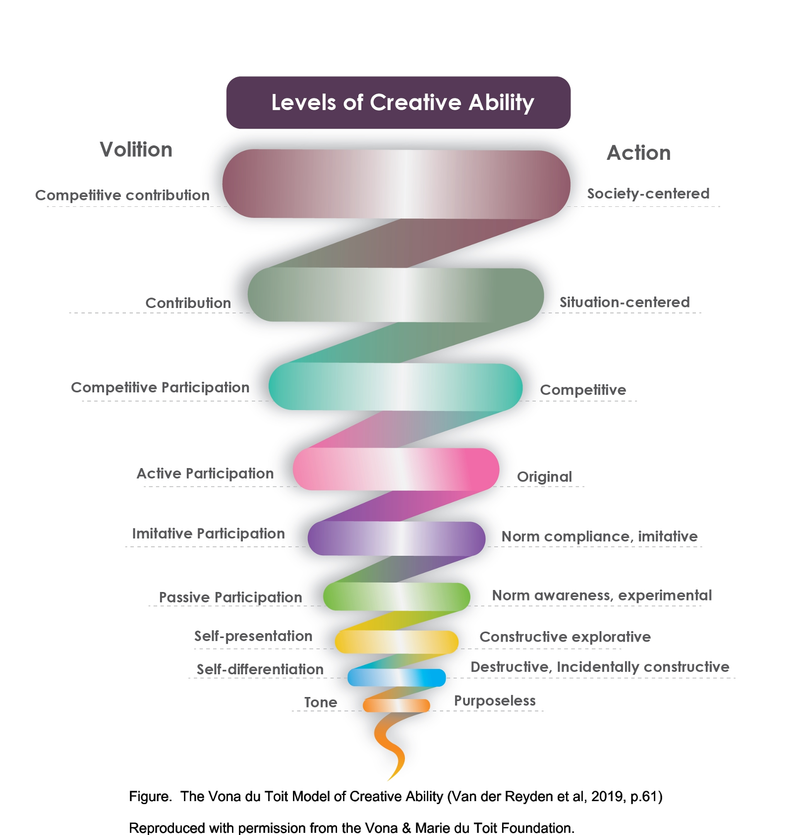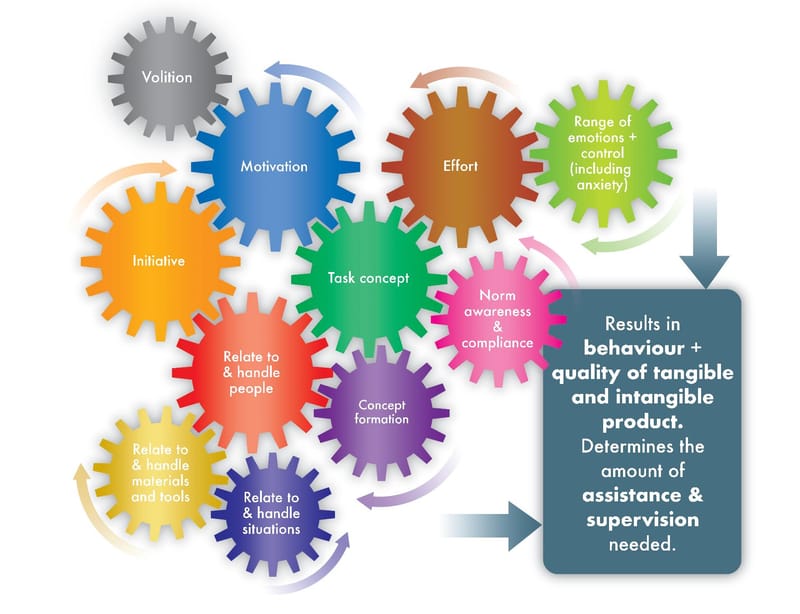The Vona du Toit
Model of Creative Ability (VdTMoCA)
(van der Reyden et al, 2019)
International
Creative Ability Network (ICAN)
Information, training, resources
JOIN FOR FREE - get free VdTMoCA news, updates, resources and discussion areas.
Go to www.patreon.com/icancreativity
All about the VdTMoCA

Overview of the VdTMoCA and ICAN
Overview of the VdTMoCA and information about Dr Wendy Sherwood and the International Creative Abilty Network
Learn More
The VdTMoCA to date
Use of the VdTMoCA in the UK and in other countries. Processes undertaken to embed the VdTMoCA - some tips for today's practitioners.
Learn More
The VdTMoCA in detail
What is creative ability? Core constructs. The model's graphic explained.
Learn More
The levels and phases of creative ability
Brief explanation of the levels and phases of creative ability, relating these to services.
Learn More
Assessment of creative ability and outcome measurement
Overview of the assessment methods and process
Learn More
Treatment
Explanation of the treatment principles and how they relate to each level of creative ability.
Learn More
MDT and service relevance of the VdTMoCA
Overview of how the VdTMoCA can positively influence the quality of service provision and other disciplines' fulfilment of their roles.
Learn MoreTestimonials
TRAINING & CPD
Creative Ability Summer School, 16 & 17 July 2025
A fantastic opportunity to gain two days of activity-based experiential learning, facilitated by two expert South African VdTMoCA occupational therapists., flying in especially to share their extensive practice experience. Ideal for OTs trained in the VdTMoCA and who are ready to really get into the nitty gritty of application to activity-based OT practice as well as some of the more talking and education-based groupwork interventions. Two days of just doing - experiential learning. Come away with a bag of objects and materials to immediately start using in your practice and handouts on treatment principles for activities experienced during the 2 days. Heaven!!
Basic training in the VdTMoCA
Basic training for OTs and OT Support Workers Getting started with the essential foundation knowledge in the VdTMoCA
Improving a service - the Analytical Survey
Gain an understanding of the Analytical Survey Method and how it can enable you to make sense of: - why clients are not attending or engaged as well as you expect in a service, - the relation between clients' needs and problems, and mismatched service provision.
Fuller understanding
Be confident in your understanding of the levels and phases of creative ability. A South African expert in the VdTMoCA brings the levels alive with clear examples for working with the levels in practice, supported by very user-friendly infographics in the VdTMoCA Refresher. VdTMoCA Refresher PLUS additionally provides treatment activities examples.
Field specific focus: autism, personality, substance misuse
All online, recorded teaching. Applying the VdTMoCA to autistic children and adults. Applying the VdTMoCA to personality traits and disorders. Applying the VdTMoCA to understanding occupational therapy for individuals with substance use disorders. The influence of personality disorder on creative ability (short module). Applying the VdTMoCA to team intervention with people with an eating disorder.
Advanced practitioner knowledge
Realising Creative Ability is for advanced knowledge, including recordings of complex case-based teaching and in-practice case supervision.